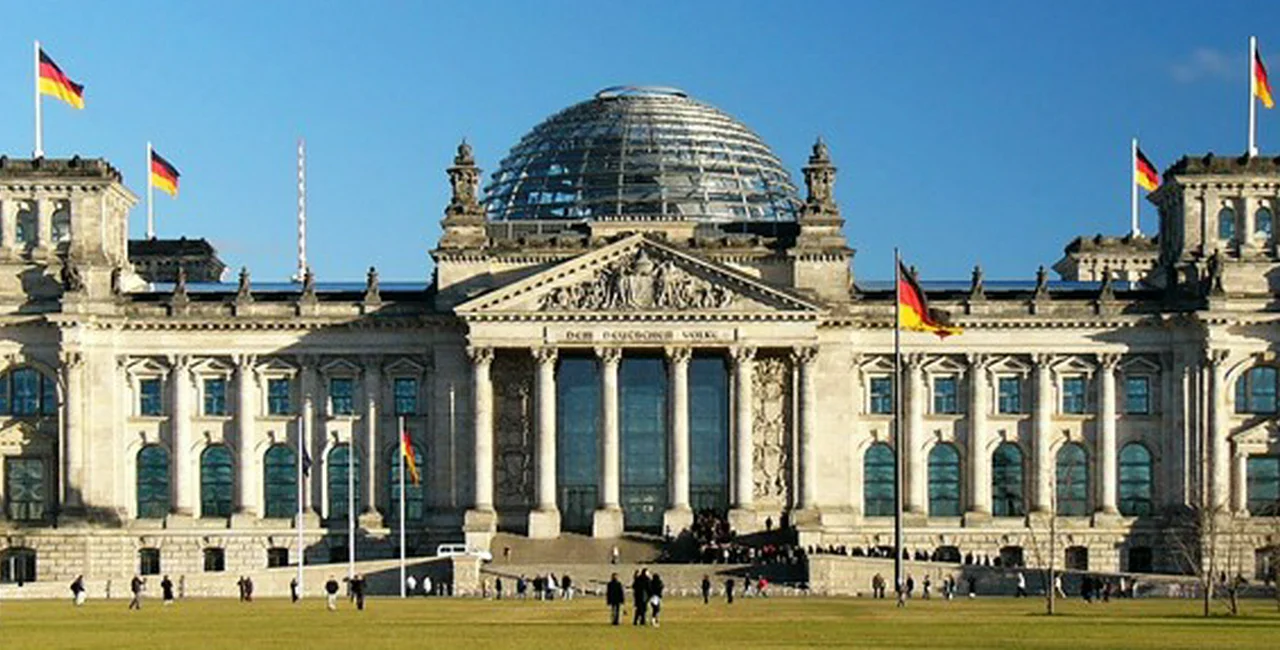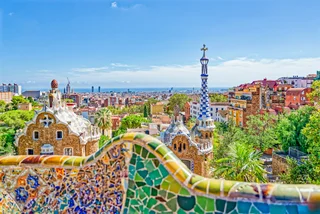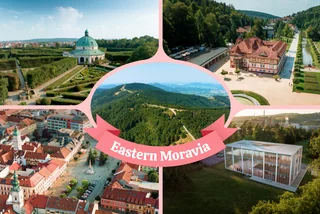Berlin is a popular travel destination among expats in the Czech Republic, and rightly so. The German capital is an exhilarating, compelling city, with enough to occupy you for days. What’s more, it’s just over 4.5 hours away from Prague by train.
Inevitably, Berlin’s unique and difficult history is a major attraction. Although the center is increasingly corporate, and gentrification is a hot topic, this history has helped foster the city’s diverse, irreverent non-conformist side, which is much more visible than in Prague or other Central European cities. The alternative tradition has manifested itself in various ways, such as political radicalism and environmentalism.
Arrival and getting there
Almost all trains from the Czech Republic to Berlin stop at the lowest level of the enormous Berlin Hauptbahnhof (Berlin main station). Upon arrival, it’s helpful to head for the S-bahn (suburban train service) shop (www.s-bahn-berlin.de), identified by a green circle with an “S” logo and located near platforms 15/16. Here you can buy tickets/passes and stock up on information. Alternatively, tickets are available from machines on the station platforms and in underground stations.
Berlin’s excellent public transportation comprises an integrated, user-friendly system of underground (U-bahn), S-bahn, buses and – in the East – trams. All forms of transport apart from the S-bahn are run by the Berlin Transportation Company (www.bvg.de). Tickets/passes are valid on all forms of transport and require validating. An honor system applies, although inspections are frequent.
Bus number 100 connects several major attractions and is therefore good for cheap sightseeing. It runs from Zoologischer Garten train station in former West Berlin and along Unter den Linden to Alexanderplatz.
Unlike Prague, Berlin is bicycle-friendly, due to the flat terrain and strong cycling culture. Everyone, from housewives to couriers, cycles and so hiring a bike (or Segway) is a good way of getting around.
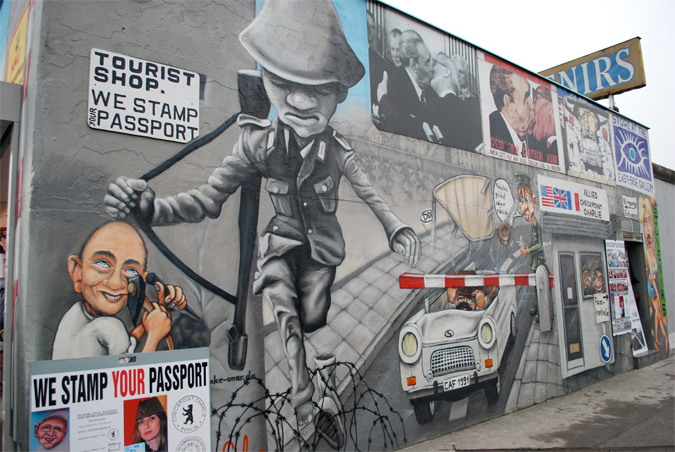
Tourist information
Tourist offices (www.tourist-information-berlin.de) are located across the city center, including in the Brandenburg Gate. They offer the Berlin WelcomeCard, which combines a city transportation pass with discounts on various attractions and services (www.berlin-welcomecard.de).
What to see
Berlin is one of Europe’s biggest capitals so sightseeing requires planning. This is compounded by the fact that some attractions are duplicated, a relic of the Cold War division. The key reference points are Kurfürstendamm, Potsdamer Platz, Reichstag/Brandenburg Gate, Unter den Linden and Alexanderplatz. We’ve also listed other central attractions that can also be seen on a short break. Bear in mind that it’s not possible to do everything listed here, especially if you include any of the museums mentioned below: all need time to do them justice.
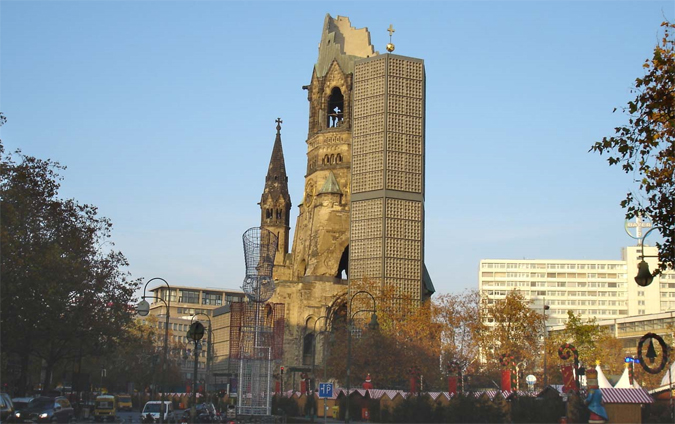
Kaiser-Wilhelm-Gedächtniskirche at Kurfürstendamm
West Berlin
One approach is to start at Kurfürstendamm – often referred to as the “Ku’damm” – the main street in West Berlin before the Wall came down, and head east. There you’ll find the stump of the Gedächtniskirche (Memorial Church), which was deliberately left in ruins after World War Two. Nearby is the extensive Story of Berlin Museum; including admission to a chilling nuclear bunker under the Kurfürstendamm.
From Kurfürstendamm you can head east on the U-bahn to the bright lights of Potsdamer Platz. Close to Potsdamer Platz and accessible by bus is the Kulturforum, a clutch of museums and galleries that formed the main cultural quarter in pre-1989 West Berlin. The group includes the Gemäldegalerie, and the famous Berlin Philharmonic Orchestra is based in Kulturforum.
Potsdamer Platz
Many find Potsdamer Platz rather soulless, thanks to a clutch of the usual global business suspects trumpeting themselves and a “you could be anywhere” atmosphere. That said, it’s undoubtedly impressive, even more so when you consider that just 20 years ago the square was nothing but a desolate wasteland where rabbits represented the only life. Take the lift to the top of Panorama Punkt, a red brick skyscraper, for fantastic views of the square and beyond.
From Potsdamer Platz you could head up Ebertstrasse and past the vast Holocaust Memorial to the iconic and smaller-in-real-life Brandenburg Gate. Ahead, you’ll see the Reichstag, once again home to the German Parliament. The views from the cupola are stupendous, although be prepared to queue for at least an hour to enjoy them. The new Regierungsviertel (Government Quarter), the group of government offices beside the Reichstag and River Spree, impresses too. If you want a break from all the new build, the sprawling Tiergarten park, between the Brandenburg Gate and Zoo, provides welcome relief.
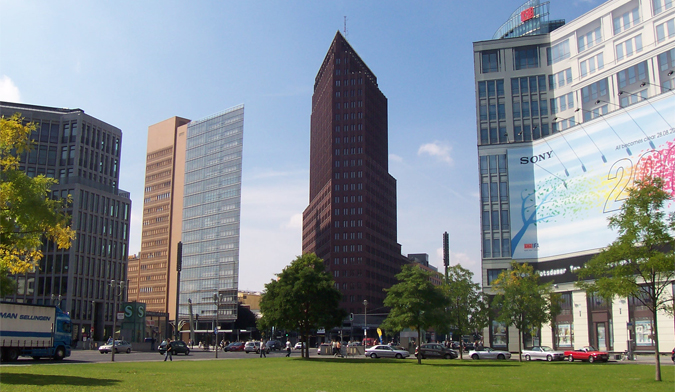
Potsdamer Platz
Brandenburg Gate and Unter den Linden
From the Reichstag you could head back to the Brandenburg Gate and then along Unter den Linden, Berlin’s main thoroughfare. After wartime destruction it was rebuilt by the Communists, who replicated many Prussian-era buildings on and around the street. Noteworthy structures include the Opera, Humboldt University, and the bombastic Gendarmemarkt nearby. Back on Unter den Linden, the German Historical Museum is absorbing, especially the modern history section. The temporary exhibitions are also excellent.
Bisecting Unter den Linden is the famous Friedrichstrasse, a shopping and entertainment center that buzzed with energy during the 1920s. The Cold War sucked the life out of it, but Friedrichstrasse has now regained some of its old character. Friedrichstrasse S-bahn station was a notorious crossing point between East and West Berlin and the scene of many tearful farewells. Another infamous crossing point, Checkpoint Charlie, stands at the southern end of the thoroughfare.
Back on Unter den Linden, if you keep heading east, you’ll eventually cross the River Spree and pass the site of the old Berlin Schloss (Palace), which was replaced by the asbestos-ridden old East German Parliament. It too was demolished, but after much debate about the site, the Castle is going to be partly reconstructed. Across the road are the hulking Berliner Dom (Cathedral) and the colonnaded Lustgarten gallery. From here it’s a short hop to the so-bad-it’s-good Alexanderplatz, which generally refers to the square and the surrounding area, at the heart of the brave new Socialist world. Nearby, the DDR Museum nearby, catalogues East German life in a “fun” and interactive way.
Alexanderplatz
The GDR-era TV tower dominates the scene, dwarfing the medieval Marienkirche church and even the grandiose red-brick Rotes Rathaus (Town Hall). A very fast lift and stupendous views from the tower compensate for the painfully slow queues. Alexanderplatz itself is a fine example of the GDR concrete aesthetic, and despite its windswept, anonymous bleakness, “Alex” is special to Berliners. It was one of the main places where collectively they helped unravel hardline geriatric Erich Honecker’s unrelentingly rigid regime.
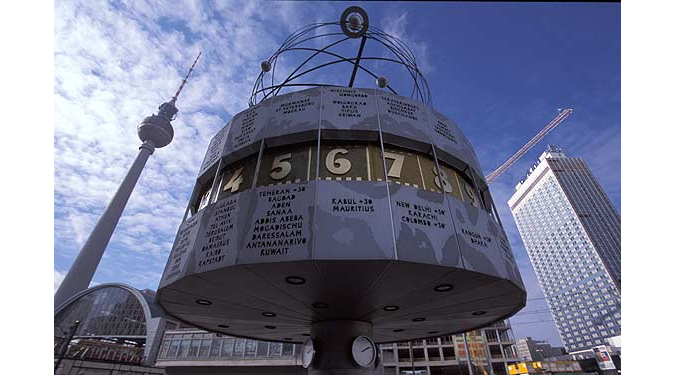
Alexanderplatz
Scheunenviertel
North of Alexanderplatz and Unter Linden lies the Scheunenviertel, one of Berlin’s most atmospheric quarters. Unlike Alexanderplatz, many pre-war buildings here survive, paradoxically through GDR indifference in the rush to build a plattenbau-based utopia. Today, the glut of trendy shops belies the neglect, although the bullet-ridden walls of the buildings by the entrance to the Sophienkirche are a reminder, as is the artists’ colony of Tacheles, in a bombed-out department store. Tacheles is on Oranienburgerstrasse, one of the district’s main drags and lined with numerous restaurants. It’s also the address of a Moorish-style synagogue, today a museum of Jewish life and a reminder of the neighborhood’s history as a Jewish quarter.
If you head east you’ll come to a restored complex of interlocking courtyards with cafes and shops, known as Hackesche Höfe. One store is devoted entirely to the Ampelmann, the likeable behatted little fellow who signals when it’s safe to cross East Berlin streets. He’s of the few aspects of GDR life to have survived re-unification and ousting by his – err – pedestrian “Wessi” counterpart. The Ampelmann has also followed a historical trend by heading west. See if you can spot him in his new home.
Museum Island
Scheunenviertel is linked to the Museum Island, where the Bodemusem, Pergamonmuseum, Alte Nationalgalerie and Neues Museum form an impressive and worthy quartet. The star sight of the Neues Museum, which was recently refurbished, is the bust of Queen Nefertiti, and the Pergamonmuseum is famous for the enormous Pergamon Altar.
Back over in former West Berlin, if you’re looking for the Wall, you’ll find a protected stretch of it on Niederkirchnerstrasse. Immediately behind, in the ruined basement of the Gestapo headquarters, is the Topography of Terror, a moving exhibition about the Gestapo and its victims.
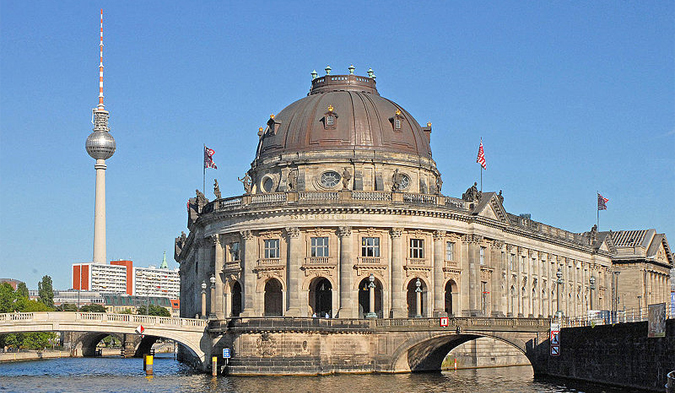
Bodemuseum on the Museum Island
Kreuzberg
A walk south from Checkpoint Charlie leads to Kreuzberg, an area with a reputation for grunginess and anarchy. It’s tamer now, and the western side, whose restored tenements evoke the atmosphere of pre-war Berlin, is more upmarket. Kreuzberg is also home to the visually arresting and moving Jewish Museum, designed by internationally acclaimed architect Daniel Liebeskind.
Prenzlauer Berg
After 1989, the focus of attention inevitably shifted east, and Prenzlauer Berg, northwest of Alexanderplatz became the “new” Kreuzberg. A well-preserved quarter of typical Berlin tenements and their hinterhöfe (courtyards), Prenzlauer Berg was bohemian and a center of dissent pre-1989; now it’s synonymous with cafés, restaurants, twee shops, and, inevitably, rampant gentrification.
Not far from Prenzlauer Berg is the Berlin Wall Documentation Center, opposite one of the most notorious stretches of the Wall, where, due to a border quirk, many residents escaped the GDR simply by stepping outside. Much of the information is in German only, but the scenes of pre-1989 life, including an elderly escapee swinging pendulum-like from a tenement window, are self-explanatory. The Center stands opposite a preserved stretch of the Wall.
Of course, the places listed above are just some of Berlin’s attractions, but they give you a strong impression of the city, and the key sights above all should not be missed.
In the next article in this series we will look at Krakow, one of the oldest cities in Poland and a popular tourist destination.
Related articles
- 10 Travel Articles That’ll Get You Excited for Autumn In the Czech Republic
- VIDEO: Amazing Recreation of 14th-Century Construction of Charles Bridge
- Prague Is the Cheapest City In Europe for Ballet, Opera, Art
- Český Krumlov Mulls Over Charging Tourists a Toll
- New Travel Guide Puts Czech Monasteries On the Map












 Reading time: 8 minutes
Reading time: 8 minutes 